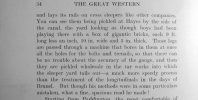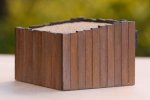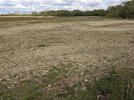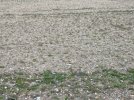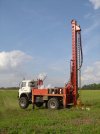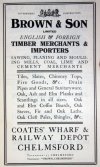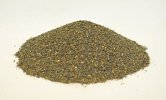Yes. From Gordon, W J "Our Home Railways", published Frederick Warne London in 1910:
View attachment 214324
View attachment 214323
- Sleepers were being imported by 1910;
- At least one railway company (the Great Western) was treating its sleepers in-house;
- The holes for chairs might have been drilled by the railway company, or perhaps earlier in the production process e.g. at the sawmill.
I am also looking at Pike, J "Track", published by Sutton Publishing in Stroud in 2001.
The way I see things,
- A railway using (predominantly) spiked FB rails would be using sleepers without holes pre-drilled for chairs;
- I have put the date of the extension to Heybridge Basin at 1894, so while my imaginary scheme might have set precendents for later light railways it would be wrong to suppose it is typical of later lines;
- A wooden sleeper can last around 15 to 18 years (Pike), and the first part of the railway, opened to Heybridge five years earlier, would not yet have old sleepers to discard;
- British sleepers were (at unspecified times) of ash and elm (Pike) and the finish I have put on my model does resemble elm, though entirely by luck not judgement;
- A tiny concern like the Heybridge Railway would not have machinery to put preservative onto sleepers;
- I haven't seen or found details of a buffer stop built from FB rail, and I think such a construction would be much more difficult than using BH rail.
If the sleepers were bought in secondhand, the buffer stop might have been built with the chair impressions facing inwards. If the sleepers were bought in new, the happless builders might have tarred the bottom few feet but not the whole lengths.
Before I write much more or alter my model, I want to find out when sleeper-built buffer stops came into use. If it was after the Great War (perhaps a shortage of steel?) then I am scuppered anyway.


